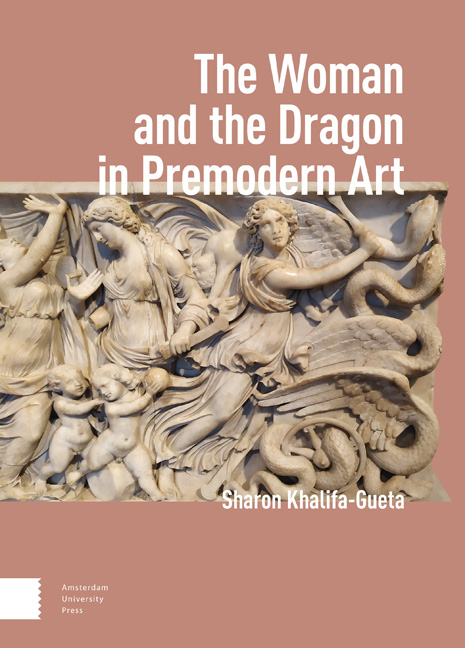Book contents
- Frontmatter
- Contents
- Acknowledgments
- Introduction
- 1 The Dragon
- 2 The Cave and the Womb: The Myth of Cadmus and the Myth of Apollo and Python
- 3 Eligible Wives and Monstrous Women: Andromeda and Medusa
- 4 Medea – The Holy Woman and the Witch
- 5 Eve and Lilith — Christianizing the Great Goddess and the Dragon
- 6 Saint Margaret – Taming the Dragon
- Conclusion
- Bibliography
- Index
6 - Saint Margaret – Taming the Dragon
Published online by Cambridge University Press: 17 February 2024
- Frontmatter
- Contents
- Acknowledgments
- Introduction
- 1 The Dragon
- 2 The Cave and the Womb: The Myth of Cadmus and the Myth of Apollo and Python
- 3 Eligible Wives and Monstrous Women: Andromeda and Medusa
- 4 Medea – The Holy Woman and the Witch
- 5 Eve and Lilith — Christianizing the Great Goddess and the Dragon
- 6 Saint Margaret – Taming the Dragon
- Conclusion
- Bibliography
- Index
Summary
Abstract: This chapter investigates the function of Saint Margaret's visual imagery in relation to her written legenda, with a focus on its importance in childbirth rituals during the late medieval and early modern periods. Illuminating the discrepancy between visual and textual descriptions of the saint's encounter with a dragon, the discussion presents the saint's image as a continuation of this millennia-old motif of the woman and the dragon, and contends that images of Saint Margaret played a similar role to images of fertility demons. I further suggest that depicting the saint as collaborating with and taming the dragon offered guidance to women in surmounting the pains of labor, and was aimed at providing them with a sense of empowerment and control during childbirth.
Keywords: Saint Margaret, Saint Marina, Saint George, hagiography, childbirth, Great Goddess.
The previous chapters traced the evolution of representations featuring women and dragons from antiquity to the early medieval period, while probing the unique characteristics of this motif as distinct from that of the male dragon slayer. The current chapter centers on the most popular visual iconography of Saint Margaret, which presents her encounter with the dragon, while relating it to her hagiography and her cultic role in Western Europe from the late medieval to the early modern period. As I will argue, an understanding of the connection between the images of the saint's encounter with the dragon and the motif of the woman and the dragon is essential to the elucidation of her role as a patron of pregnant women and newborns, and of the function of both her written legend and her visual representations in childbirth rituals. This saint's encounter with the dragon is viewed as a continuation of the motif representing the woman and the dragon in a Christian context, focusing on the visual iconography of Saint Margaret.
As I will demonstrate, a comprehensive understanding of the iconography of Saint Margaret arises not only through its comparison with images of male dragonslayers, but also through a comparative study of the differences between written accounts of Margaret's life and her visual depictions. By exposing the inconsistencies between her written hagiography, or legenda, and her visual representation, and revealing the dissonance between word and image, the richness and complexity of her iconography can be fully appreciated, as can powerful role of visual imagery in the saint's cult.
- Type
- Chapter
- Information
- The Woman and the Dragon in Premodern Art , pp. 227 - 272Publisher: Amsterdam University PressPrint publication year: 2023

